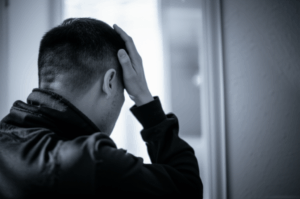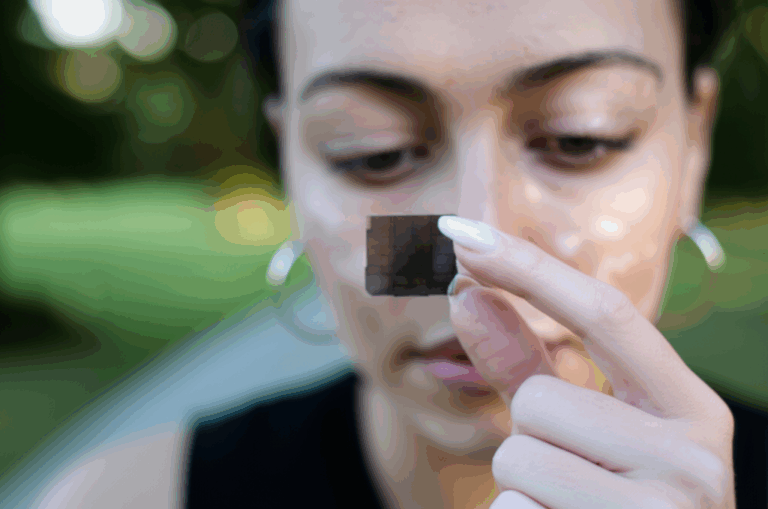Vitiligo, a chronic skin condition characterized by the loss of pigmentation resulting in white patches, is often perceived merely as a cosmetic issue. However, this perspective drastically undermines the profound psychological and emotional toll it takes on affected individuals. Beyond the visible changes, vitiligo can trigger a mental health crisis, leading to significant distress, reduced self-esteem, social isolation, anxiety, and depression. Understanding the intricate link between vitiligo and mental health is crucial for providing comprehensive care and support to those living with this condition.
Understanding Vitiligo and Its Visible Impact
Vitiligo arises from the dysfunction or destruction of melanocytes, the cells responsible for producing melanin, which gives skin its color. This loss of pigmentation results in distinct white patches that can appear on any part of the body, and is often more pronounced in individuals with darker skin tones, creating a stark visual contrast. While vitiligo is not life-threatening, contagious, or physically painful, its impact on a person’s appearance can be devastating.
The visibility of vitiligo lesions often leads to:
- Self-consciousness: Individuals may feel intensely aware and uncomfortable with their appearance, constantly worrying about how others perceive them.
- Embarrassment: The noticeable skin changes can cause feelings of shame and humiliation, particularly when vitiligo affects visible areas like the face, hands, and arms.
- Social anxiety: Fear of judgment, stares, or negative comments can lead to avoidance of social situations, contributing to isolation and loneliness.
- Distorted body image: Vitiligo can alter a person’s perception of their body, leading to dissatisfaction and a negative self-image.
The Mental Health Toll: Anxiety and Depression
The psychological burden of vitiligo extends far beyond mere discomfort, with anxiety and depression emerging as significant concerns. Studies reveal a high prevalence of these mental health issues among vitiligo patients:
- Anxiety: A comprehensive review and meta-analysis indicated that approximately 35.8% of vitiligo patients experience anxiety. The constant worry about appearance, potential social rejection, and the unpredictable nature of the condition contribute to heightened anxiety levels.
- Depression: Research has consistently demonstrated a strong link between vitiligo and depression, with individuals with vitiligo being at a significantly higher risk of clinical depression or depressive symptoms. Approximately one-third of vitiligo patients report depressive symptoms or impaired general health, and up to one-quarter experience clinical depression.
- A recent study in Saudi Arabia found a notably high prevalence of depression in patients with vitiligo, reinforcing the need for comprehensive treatment approaches that address both the dermatological and psychological aspects of the disorder.
These statistics underscore the urgent need to recognize vitiligo as more than just a skin condition and to address the significant mental health challenges it presents.
Risk Factors and Vulnerable Populations
While anyone with vitiligo can experience mental health difficulties, certain factors and populations are particularly vulnerable:
- Younger patients: Vitiligo can significantly reduce the quality of life, especially in younger patients, impacting daily activities, careers, and relationships. Adolescents, already concerned about their appearance, can be especially devastated by the condition.
- Women: Studies suggest that women with vitiligo may experience higher rates of depression and anxiety compared to men. This may be attributed to societal pressures and the emphasis on skin beauty for women.
- Individuals with darker skin tones: The contrast between depigmented skin and darker skin can be more pronounced, leading to increased self-consciousness and social stigma.
- Those with extensive or visible lesions: Disease severity and the location of lesions, particularly on the face, hands, and neck, can significantly worsen the psychological impact.
- Individuals with a history of mental health issues: Pre-existing mental health conditions can be exacerbated by the onset of vitiligo.
- Children: Children with vitiligo face unique challenges, including strained peer relationships, reduced socialization, and social issues that may carry into adulthood. Even parents and relatives of children with vitiligo may experience anxiety and depression.
The Impact on Quality of Life
The mental health challenges associated with vitiligo profoundly impact an individual’s overall quality of life, affecting various aspects of their daily existence:
- Social interactions: Fear of judgment and social exclusion can lead to avoidance of social gatherings, difficulty forming relationships, and feelings of isolation.
- Personal relationships: Vitiligo can affect intimacy and romantic relationships due to feelings of insecurity and self-consciousness.
- Career prospects: The visible nature of the condition can impact career aspirations, with some individuals experiencing discrimination or feeling limited in their career choices.
- Daily activities: Simple tasks like going to the gym, swimming, or wearing certain clothing can become sources of anxiety and distress.
- Self-esteem and self-confidence: Vitiligo can erode self-esteem and confidence, leading to a negative self-image and feelings of worthlessness.
Stigma and Misconceptions
A major contributor to the mental health burden of vitiligo is the stigma and misconceptions surrounding the condition. Many people are unfamiliar with vitiligo, leading to false assumptions and negative reactions. Common misconceptions include:
- Contagiousness: The mistaken belief that vitiligo is contagious can lead to social avoidance and discrimination.
- Hygiene: Some people wrongly assume that vitiligo is caused by poor hygiene or a lack of skincare.
- Cosmetic issue: Dismissing vitiligo as merely a cosmetic problem undermines the significant psychological distress it can cause.
- Punishment or curse: In some cultures, vitiligo is wrongly associated with punishment for past sins or a spiritual curse.
These misconceptions contribute to stigmatization, which can manifest as:
- Staring and Whispering: Individuals with vitiligo often experience unwanted attention, stares, and whispered comments, making them feel self-conscious and uncomfortable.
- Teasing and Bullying: Children and adolescents with vitiligo may be subjected to teasing and bullying, leading to emotional distress and social isolation.
- Social Exclusion: Fear of judgment and negative reactions can lead to social exclusion, as individuals with vitiligo may avoid social situations to protect themselves from potential embarrassment or discrimination.
- Discrimination: In some cases, individuals with vitiligo may experience discrimination in employment, housing, or other areas of life.
The Role of Cultural Factors
Cultural beliefs and societal norms can significantly influence the psychological impact of vitiligo. In some cultures, where skin color is highly valued, vitiligo can carry a greater social stigma, leading to increased feelings of shame and isolation. Additionally, cultural beliefs about the causes and treatment of vitiligo can impact how individuals cope with the condition and seek help.
- India: In India, vitiligo is known as “safed dag” or “kod” and carries much social stigma. Due to a lack of education and deeply rooted superstitions, vitiligo is sometimes considered a punishment for past sins.
- Cultural variations: The varying prevalence of mental disorders such as depression, anxiety, and stress across different geographical and cultural contexts suggests that cultural factors, clothing styles, and other societal influences significantly impact the severity and prevalence of these mental health issues.
Breaking the Cycle: Integrated Treatment and Support
Addressing the mental health crisis faced by vitiligo patients requires a holistic approach that integrates dermatological and psychological care. Key strategies include:
- Raising Awareness and Education:
- Public awareness campaigns: Educating the public about vitiligo, dispelling misconceptions, and promoting understanding and acceptance are crucial steps in reducing stigma.
- School programs: Implementing educational programs in schools can help children understand vitiligo and prevent bullying and teasing.
- Healthcare provider education: Training healthcare providers to recognize the psychological impact of vitiligo and provide appropriate support and referrals.
- Providing Psychological Support:
- Cognitive Behavioral Therapy (CBT): CBT is a type of therapy that helps individuals identify and change negative thought patterns and behaviors. It can be effective in managing anxiety, depression, and low self-esteem associated with vitiligo.
- Acceptance and Commitment Therapy (ACT): ACT is a cutting-edge development within CBT, which places greater emphasis on how to engage in helpful behaviors, spending less time and energy analyzing and changing unhelpful thoughts. Depending on where the vitiligo related stress comes from, this type of therapy may be ideal.
- Counseling: Individual or group counseling can provide a safe space for individuals with vitiligo to explore their feelings, develop coping strategies, and build self-esteem.
- Support groups: Connecting with others who have vitiligo can provide a sense of community, reduce feelings of isolation, and offer valuable support and advice.
- Promoting Self-Care and Empowerment:
- Stress management techniques: Encouraging individuals with vitiligo to practice relaxation techniques, mindfulness, and other stress-reducing activities.
- Healthy lifestyle: Promoting a healthy diet, regular exercise, and adequate sleep can improve overall well-being and resilience.
- Body image acceptance: Encouraging individuals to focus on their strengths and talents rather than solely their appearance.
- Camouflage and concealment: Providing information and resources on makeup, clothing, and other techniques to help individuals feel more comfortable with their appearance.
- Creating Supportive Environments:
- Family support: Educating family members about vitiligo and encouraging them to provide emotional support and understanding.
- Workplace support: Promoting inclusive workplace policies and practices that protect individuals with vitiligo from discrimination.
- Community support: Creating community events and activities that celebrate diversity and promote acceptance of all individuals, regardless of their appearance.
- Integrating Mental Health Support in Vitiligo Support Groups: Support groups offer a structured environment where patients can share their thoughts on mental health topics, offering a valuable benefit to this population. One critical recommendation for designing an effective patient support group is to have a mental health provider connected to the group to address mental health wellness.
Natural Compounds Usefulness
Natural compounds may be useful and safe treatment options in patients with inflammatory skin disease and mental disorders, considering their anti-inflammatory and mood-regulating effects.
The Path Forward: Empathy, Understanding, and Action
Vitiligo is far more than a skin condition; it is a complex issue that profoundly impacts mental health and quality of life. By recognizing the psychological burden, challenging stigma, and providing integrated care and support, we can empower individuals with vitiligo to live fulfilling and meaningful lives.
It is essential to:
- Listen: Create a safe space for individuals with vitiligo to share their experiences and feelings without judgment.
- Validate: Acknowledge the challenges they face and the impact on their mental health.
- Educate: Spread awareness about vitiligo and challenge misconceptions.
- Advocate: Support policies and practices that promote inclusion and protect individuals with vitiligo from discrimination.
- Act: Take action to create a more empathetic and supportive world for those living with vitiligo.
By working together, we can transform the narrative around vitiligo, ensuring that those affected receive the care, support, and understanding they deserve.







